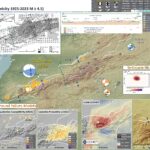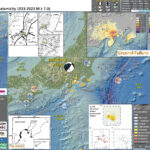This evening (my time) there was an earthquake in Morocco. Magnitude 6.8, rather shallow, reverse or thrust (compressional) mechanism. https://earthquake.usgs.gov/earthquakes/eventpage/us7000kufc/executive This M 6.8 earthquake happened in the Atlas Mountains, a compressional system with south dipping reverse faults on the north…
Earthquake Report: Kantō, Japan
Today marks 100 years since the 1923 Great Kantō Earthquake. https://earthquake.usgs.gov/earthquakes/eventpage/iscgem911526/executive I am putting together the basics and will update over the next few months. This earthquake generated strong ground shaking, triggered landslides, induced liquefaction, generated tsunami, and (sadly) caused…


